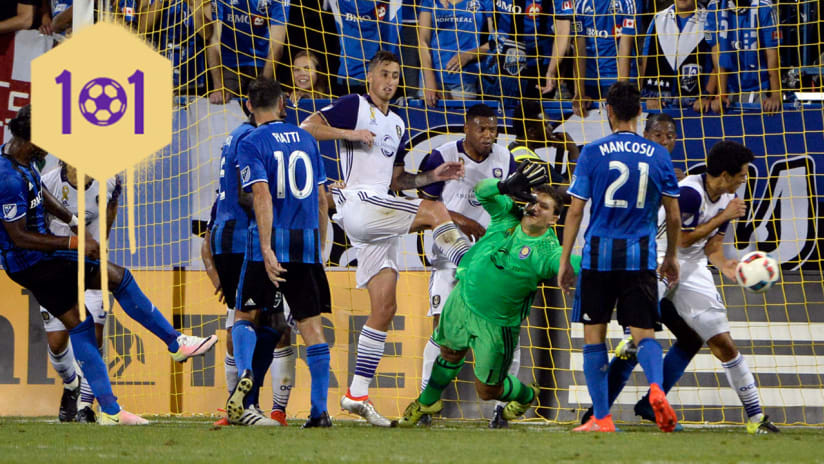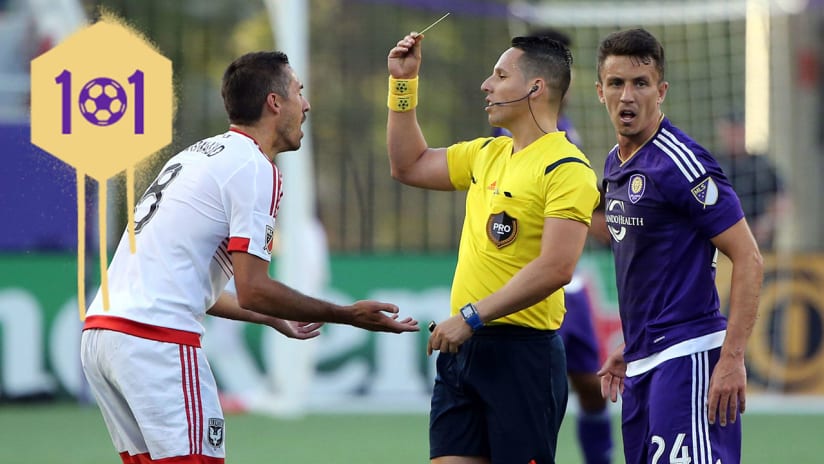The global sport of soccer seems to have its variations in all different parts of the world. Some of it is based on the culture of the fans, other contrasts lie in the way the players behave. One thing that seems to remain a constant is the agenda of set pieces.
Set pieces happen when either the ball goes out of play or the referee stops play for misconduct. Let’s break down the different ways the game is set up to get the ball rolling again.
The Different Types of Set Pieces
When the ball crosses one of the four lines that perimeter the soccer pitch it must be played back in by its respective set-piece. These will either be kicked in or thrown in.
Goal Kicks
A goal kick is required when Team A is attacking Team B’s goal and the ball goes out of play over one of the lines that run from the corner flag to one of Team B’s goal posts and one of Team A’s players was the last to touch the ball. The goal kick is taken from anywhere inside of the six yard box usually by team B’s goalkeeper unless another player is better suited for the task.
The kick-taker will generally kick the ball up the field in order to advance toward Team A’s goal, unless the kick-taker opts to play out from the back and make a short pass.
Corners
Corners occur when the ball crosses the same line for a goal kick. The difference with a corner is that the ball must come off of a Team B player. Team A will then kick the ball in from the corner attacking Team B’s goal. The most common tactic is to cross the ball into the box in order to connect with one of Team A’s players in attempt for a headed goal.
Thrown-Ins
A throw-in will be awarded when the ball crosses one of the sidelines that span from corner flag to corner flag. The concept for a throw-in is similar to that of a corner in the sense that if the last player to touch it was on Team A then it will be Team B’s throw-in.
You can't be ruled offside on a throw-in.
Set Pieces That Occur After Misconduct
When the referee stops play for either a bad tackle, a handball or anything else that isn’t congruent with the rules of play, either a free-kick or penalty is awarded depending on which boundaries the incident happens in.
Penalties
A penalty is awarded either when a player of Team A is fouled within Team B’s penalty box or when a player—not including the goalkeeper—from Team B’s hand comes into deliberate contact with the ball. Sometimes a foul within the penalty box will result in a cautionary yellow card or the dismissal of a red card for the Team B player if the incident is bad enough.
A penalty is a one-on-one shot from the 12-yard spot that is taken by a Team A Player against the Team B goalkeeper. This is viewed as a major advantage for Team A.
It is worth noting that when the penalty is taken if the ball hits the post or crossbar and does not come into contact with a Team B player then the Team A player is not allowed to touch the ball until another player has made contact with it.
Free-Kicks (Direct and Indirect)
Similar to penalty kicks, a free-kick occurs when a player of Team A is fouled by a Team B player or if the ball comes into deliberate contact with a Team B player’s hand. The difference with a free-kick is that the incident must happen outside of Team B’s box.
Depending on the position of the free-kick on the field there are a few options. Team A may opt to cross the ball into the box in the same fashion as a corner in order for one of their players to connect and score. If Team A’s player feels comfortable shooting from the position, they will try to score directly from the free kick.
In positions where Team A will most likely shoot, the goalkeeper will set up a wall 10 yards away from the free-kick using his defending players in order to block one side of the goal. The wall makes it difficult for the shooting player to score and closes down the angles.
Indirect free kicks, while a rare occasion, take place when specific incidents happen. An indirect free-kick can be awarded in any position on the pitch, including the defending team’s penalty box. Indirect free-kicks are awarded if a goalkeeper picks up the ball after a pass from his own player, or if other non-contact fouls occur. A player cannot score directly from an indirect free-kick and therefore must pass it to another player before scoring a goal is possible. The most frequent indirect free-kick occurs after an offside call. While the offside rule only applies in the defending team’s half, it is not common that a player would try to shoot from that far out. If the free-kick was from an offside call and the player scored directly from the free-kick, the goal would be dismissed under the indirect free-kick rule.





